The attic is where many people store their old and unused belongings, often considering them useless and irrelevant. However, for the Italian writer Gesualdo Bufalino (Comiso 15 November 1920 – 14 June 1996), one such attic of photographer Gioacchino Iacono Caruso was a treasure trove.
“(…) the attic hid, together with other indifferent antiques, a trunk full of rectangular boxes, each in turn filled with collodion plates (…) all ashen and earthy like relics dug up from the underground of a necropolis.”
Gesualdo Bufalino
Bufalino’s fascination with the past and its preservation is reflected in the mural project “Il Tempo in Posa / Posing Time” by Case Maclaim and Marat Morik. This project is a tribute to Comiso, a city in southeastern Sicily, its people and its rich heritage.
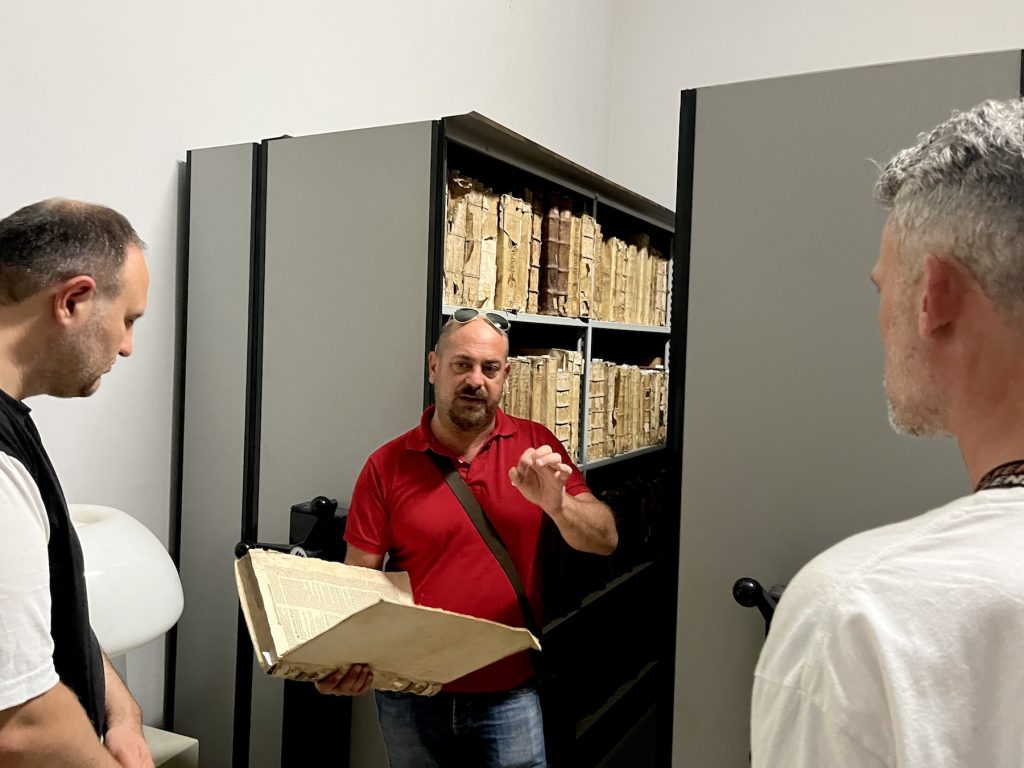
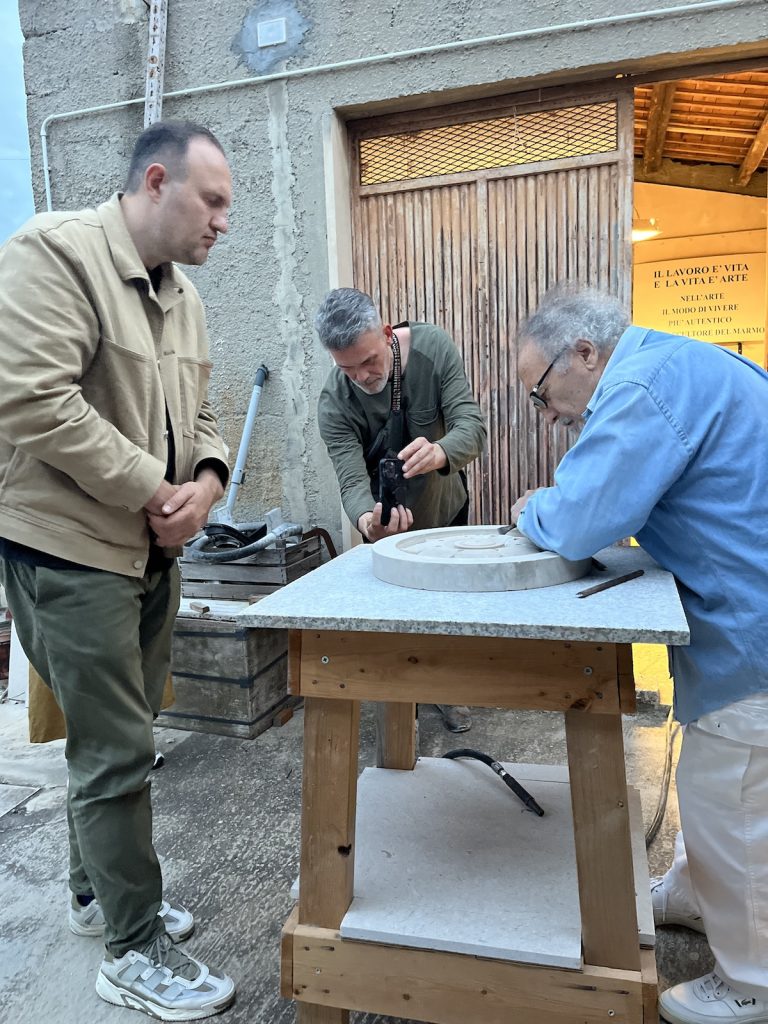
Case Maclaim and Marat Morik. Image copyright Vincenzo-Cascone
One such snapshot of the past is Gioacchino Iacono Caruso’s photographic plates, captured in the late 19th century, which present a world that no longer exists.
Gioacchino Iacono Caruso was a passionate photographer who played a significant role in Comiso’s social life. His photographs captured not only the characters of the Lacono family but also humble individuals such as farmers, shepherds, and musicians. Many of these photos were taken on the Lacono estate in the Boscorotondo district, including the large stately home that still stands there today. These photographs were forgotten until they were found by his nephew, of the same name, in 1970, along with Bufalino. The discovery of Gioacchino Lacono Caruso’s photos was the beginning of Bufalino’s career as an Italian writer. Bufalino’s famous books, “Comiso Yesterday – Images of Elegant and Rural Life”, and “Il Tempo in Posa“, were based on Gioacchino Lacono’s photographs.
Despite the passage of time, these images remain invaluable, as they offer a glimpse into the past that might otherwise have been forgotten.
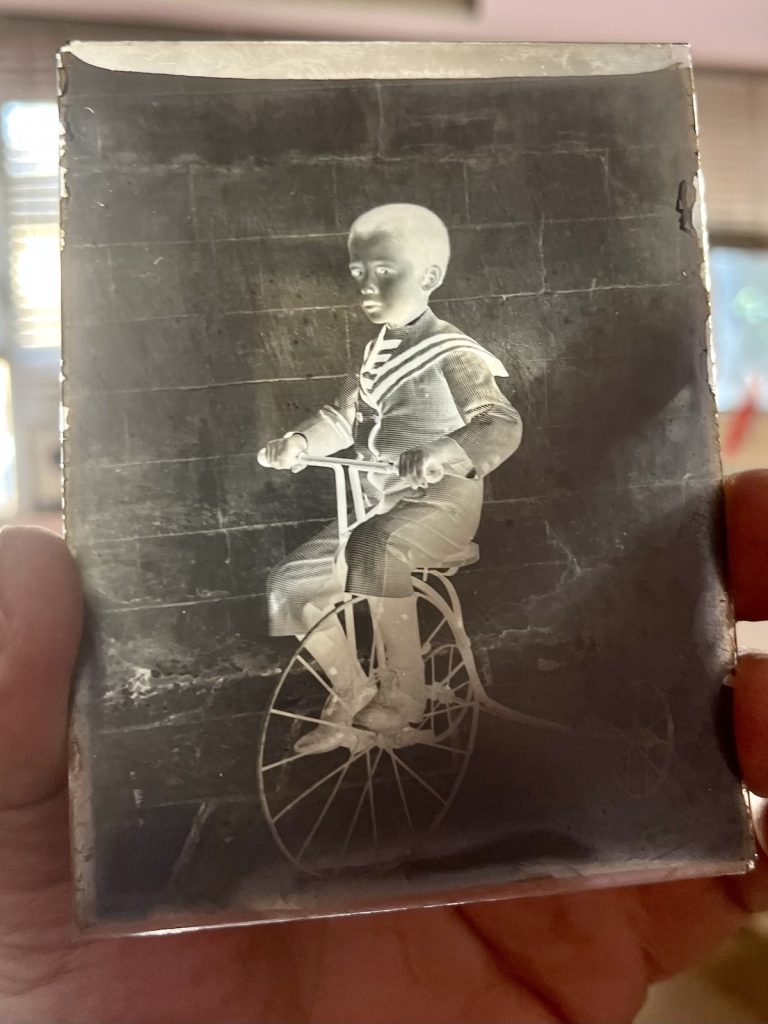
The found photographic plate of Carmelo Cabibbo Iacono taken by Gioacchino Iacono Caruso .
Case Maclaim and Marat Morik pay tribute to Comiso’s Heritage and People through their double murals facing the roundabout of Corso Ho Chi Min. These murals capture the essence of the city while also preserving the memories and stories of generations past.
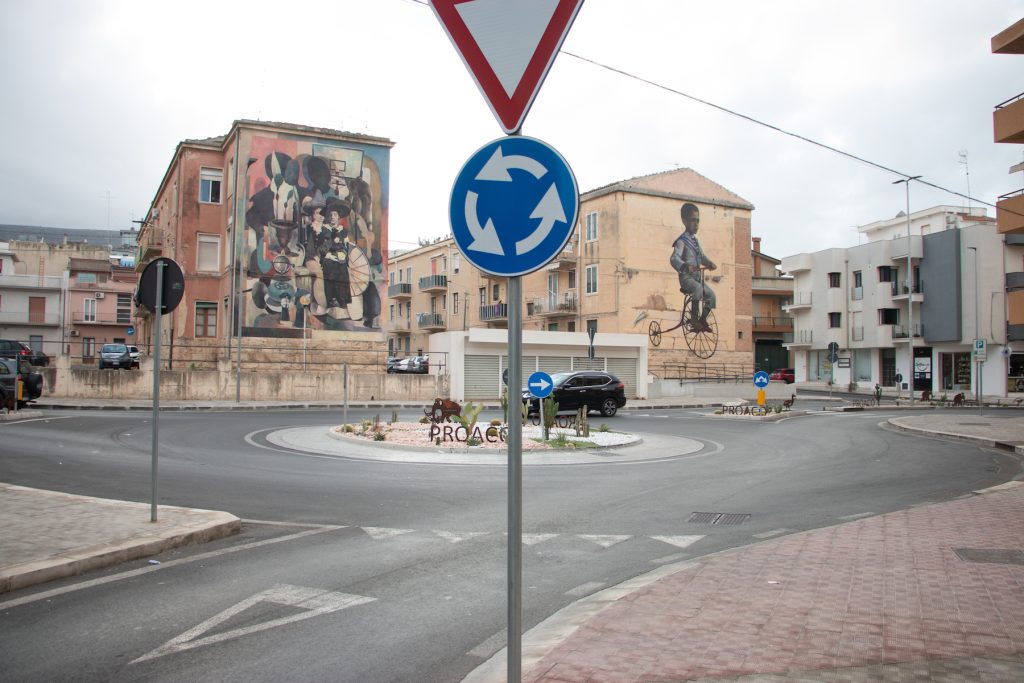
Case Maclaim and Marat Morik murals. Image copyright Vincenzo-Cascone
The “Il Tempo in Posa” project comprises various compositions, including one that showcases Carmelo Cabibbo Iacono, the son of doctor Nicola Cabibbo, who founded the Comiso hospital. In this composition, Case Maclaim has replicated the photographic plate of Gioacchino Iacono Caruso, portraying Carmelo riding a Victorian child’s tricycle.
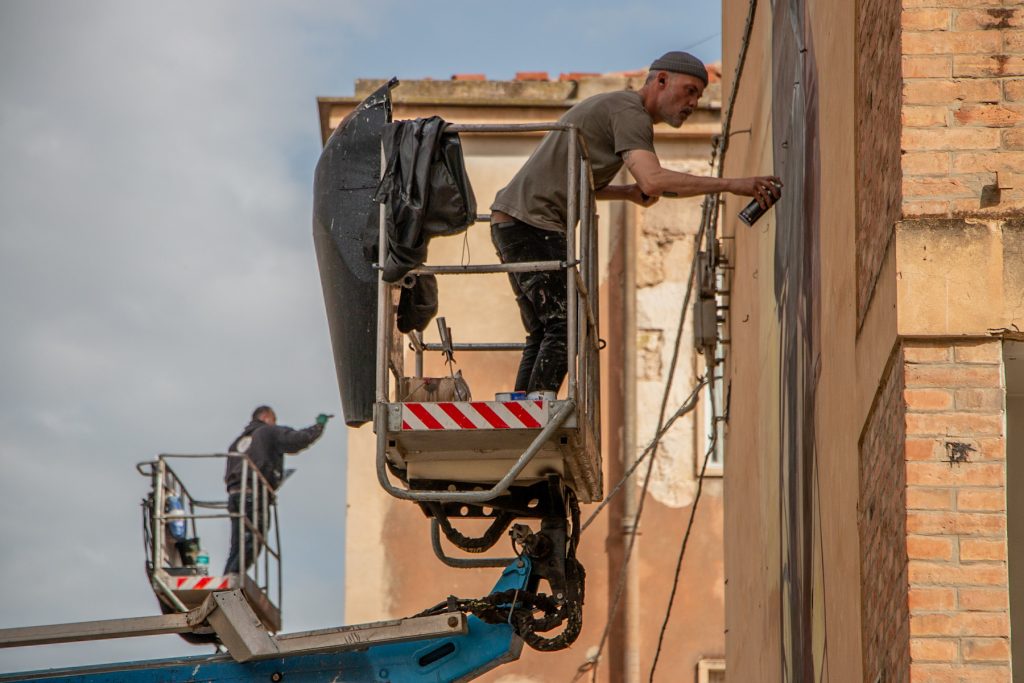
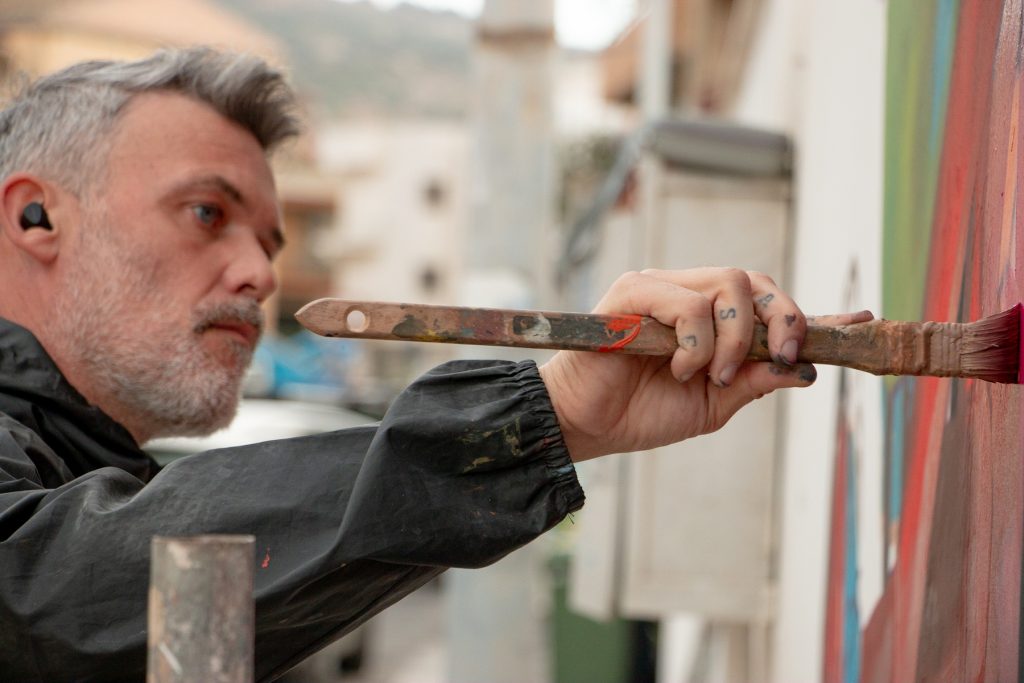
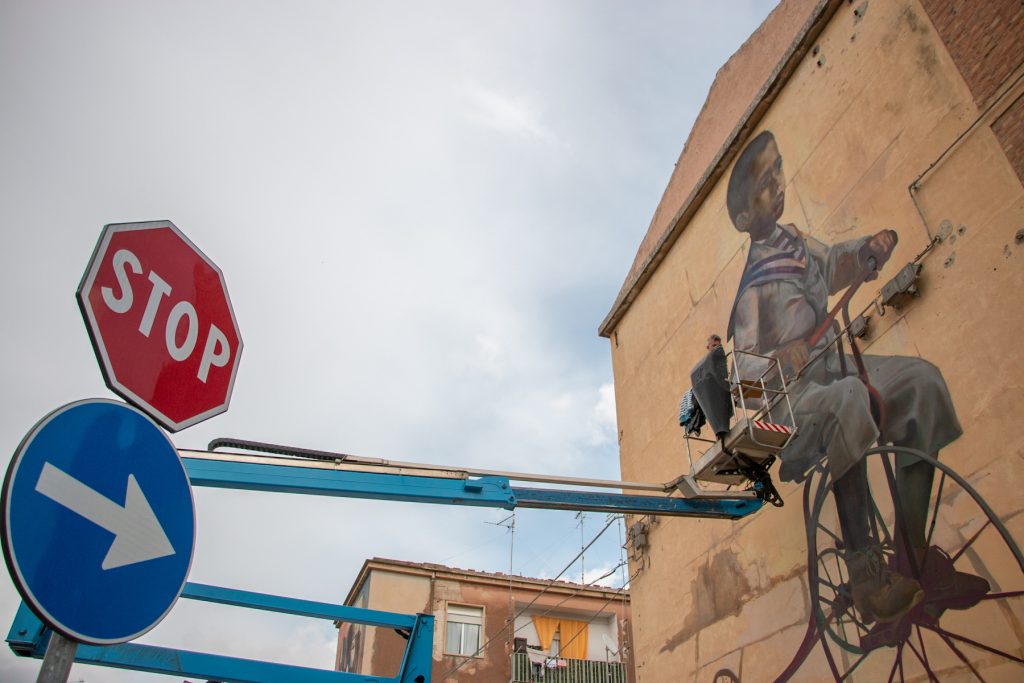
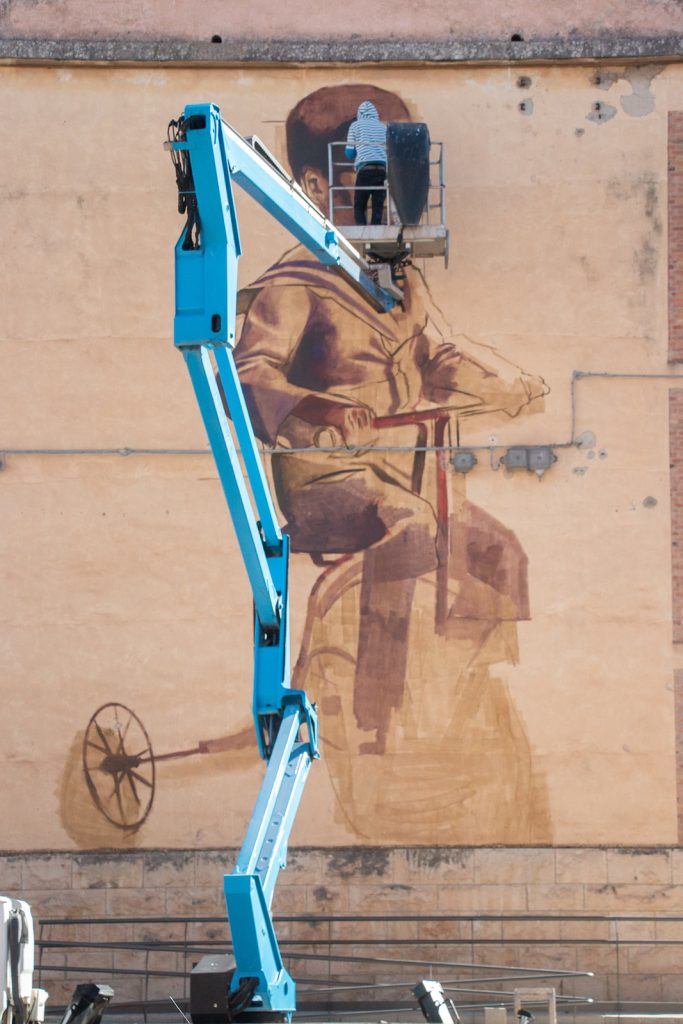
Case Maclaim work in progress. Image copyright Vincenzo-Cascone
In his signature hyper-realistic style, Case Maclaim has painted Carmelo, fusing spray paint and photorealism seamlessly. Gioacchino Iacono Caruso’s photographic plate is now imbued with colour, suspended in a transitional realm between the present and the past.
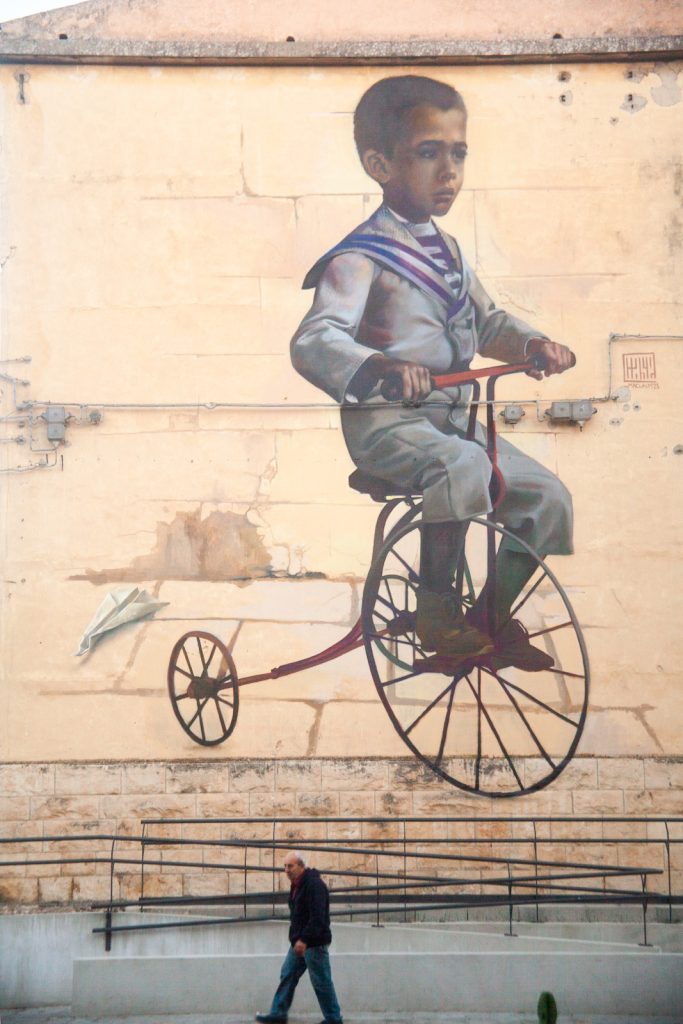
Case Maclaim final mural.Image copyright Vincenzo-Cascone
Marat Morik’s composition is an interplay of various elements, where two female figures’ portraits are subsumed by fragments of local history that the artist collected during his preliminary research in the area. These fragments, carefully curated and arranged, include a world map, a detail of a tricycle wheel, a basketball scoreboard observed during the inspection of the military NATO base, and decorative elements from the churches of the city.
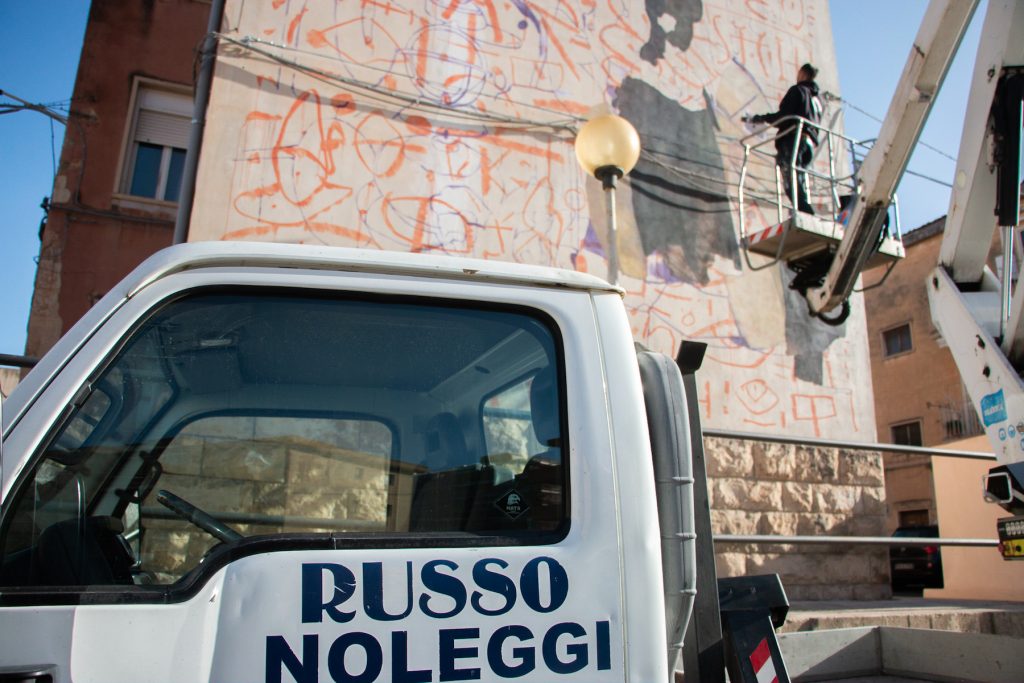
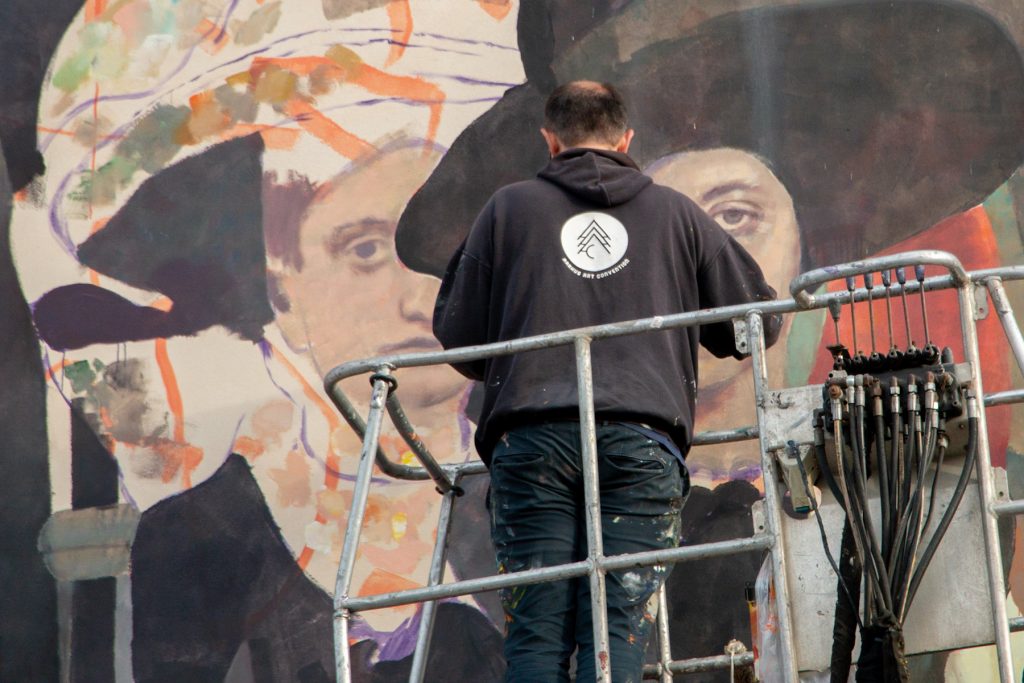
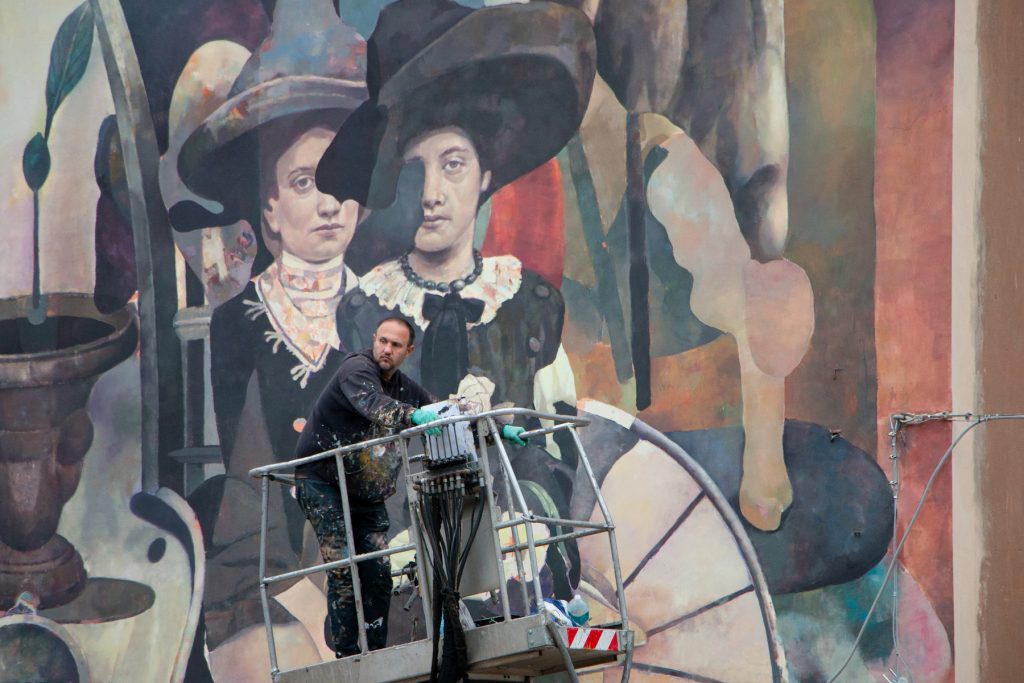
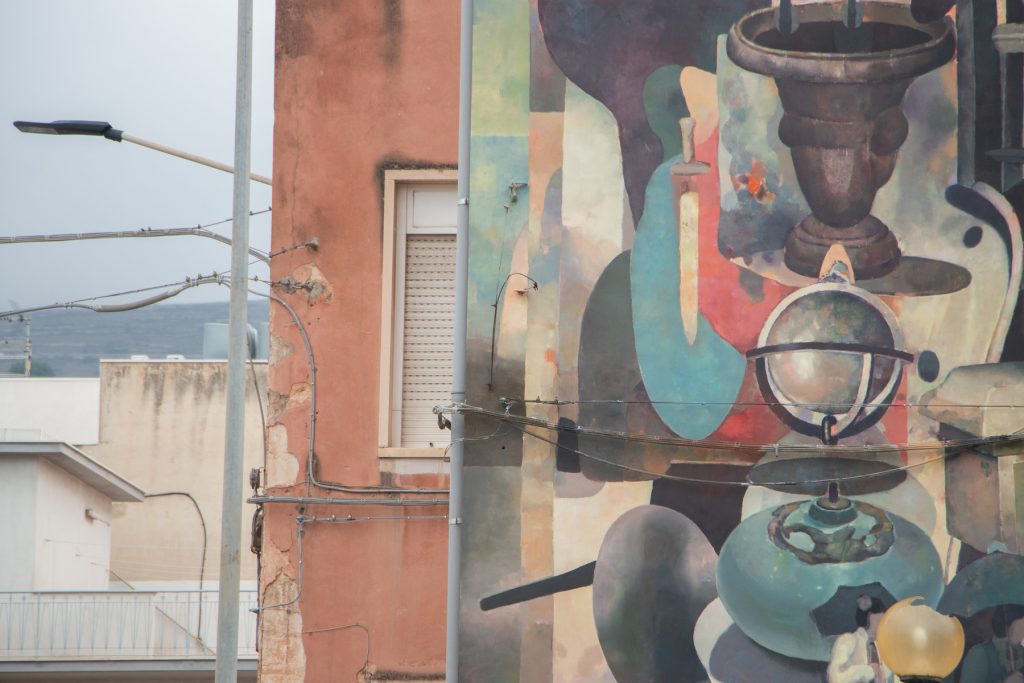
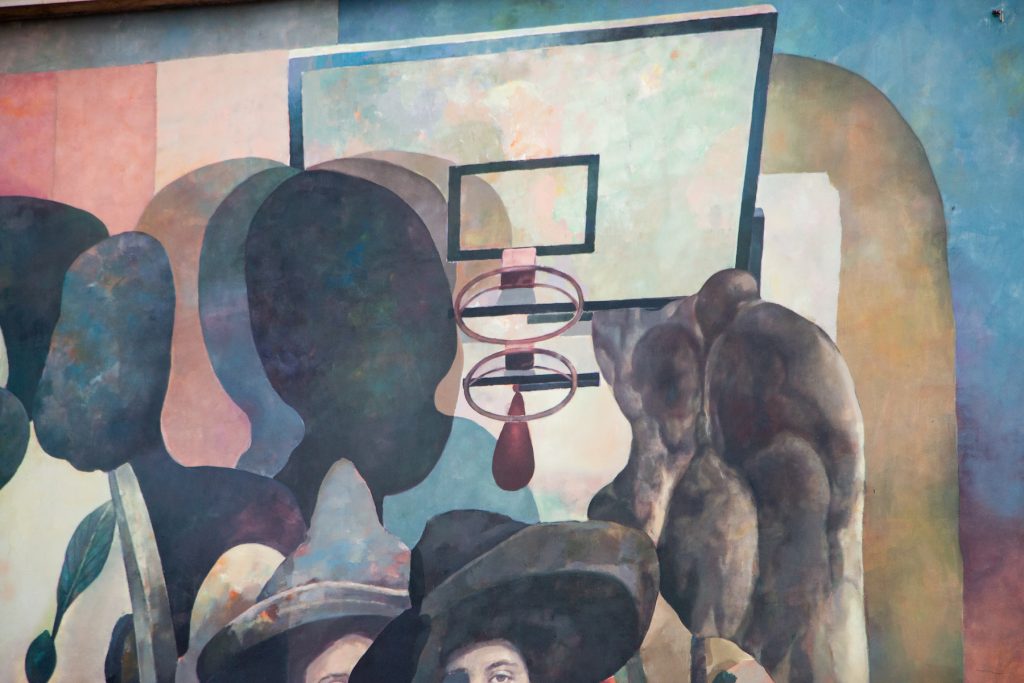
Marat Morik work in progress. Image copyright Vincenzo-Cascone
The resulting composition is a beautiful testament to the complexity and richness of the human experience, where past and present, personal and collective, all intersect and intertwine.
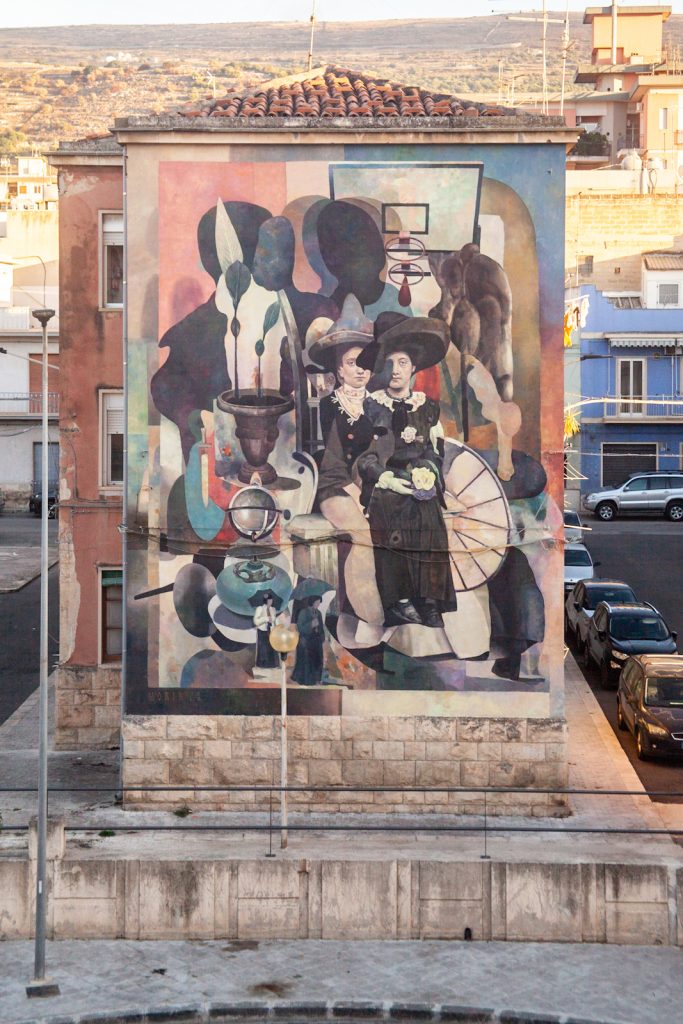
Marat Morik final mural. Image copyright Vincenzo-Cascone
Close to the roundabout, Case Maclaim paints his second mural, a more modern and colourful child’s plastic tricycle. Unlike the other works in the installation, this piece is devoid of any human figures, serving as a subtle yet poignant commentary on the depopulation of the city and the absence of children in its streets.
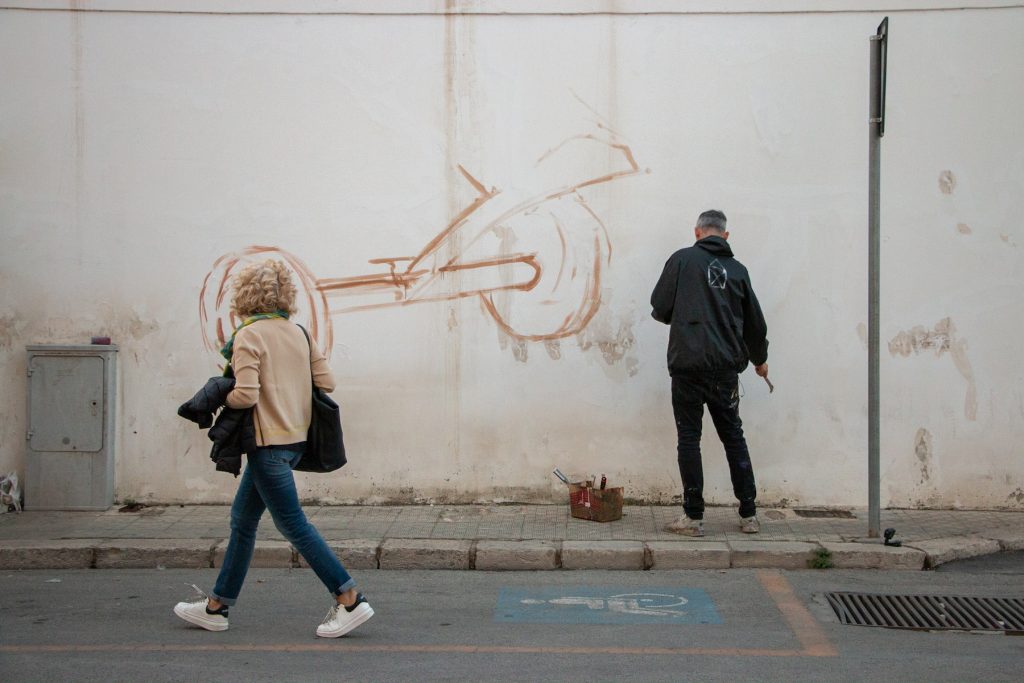
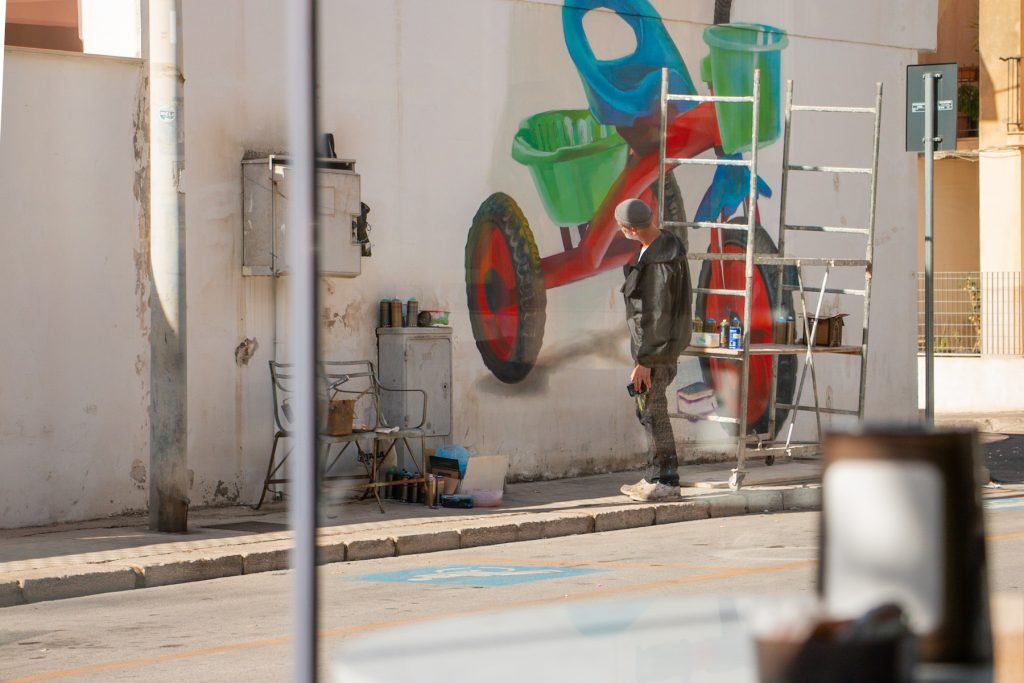
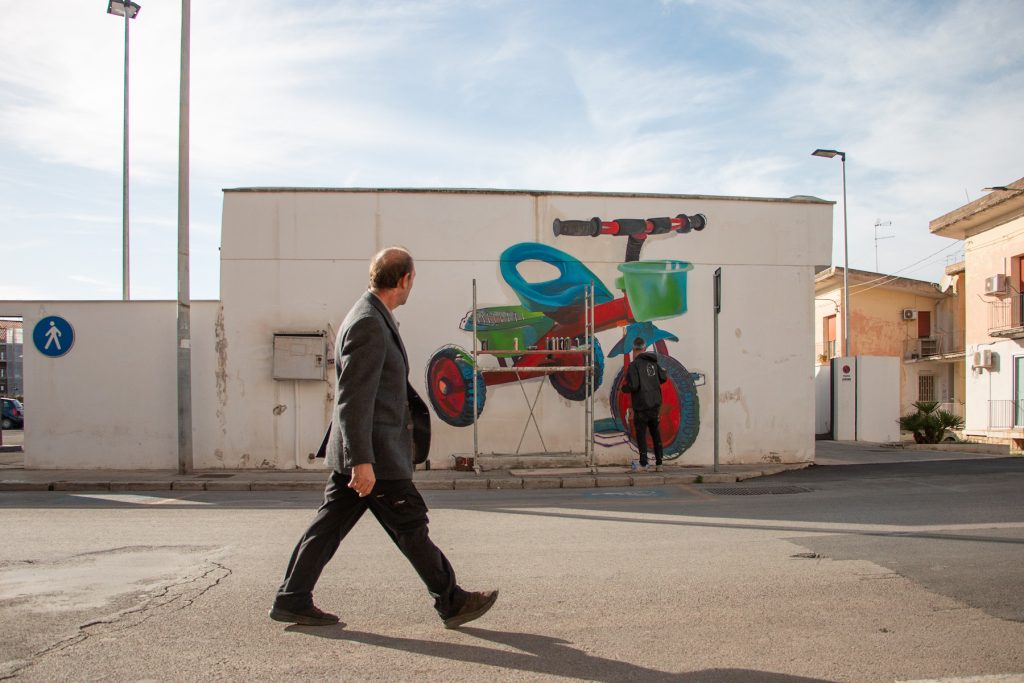
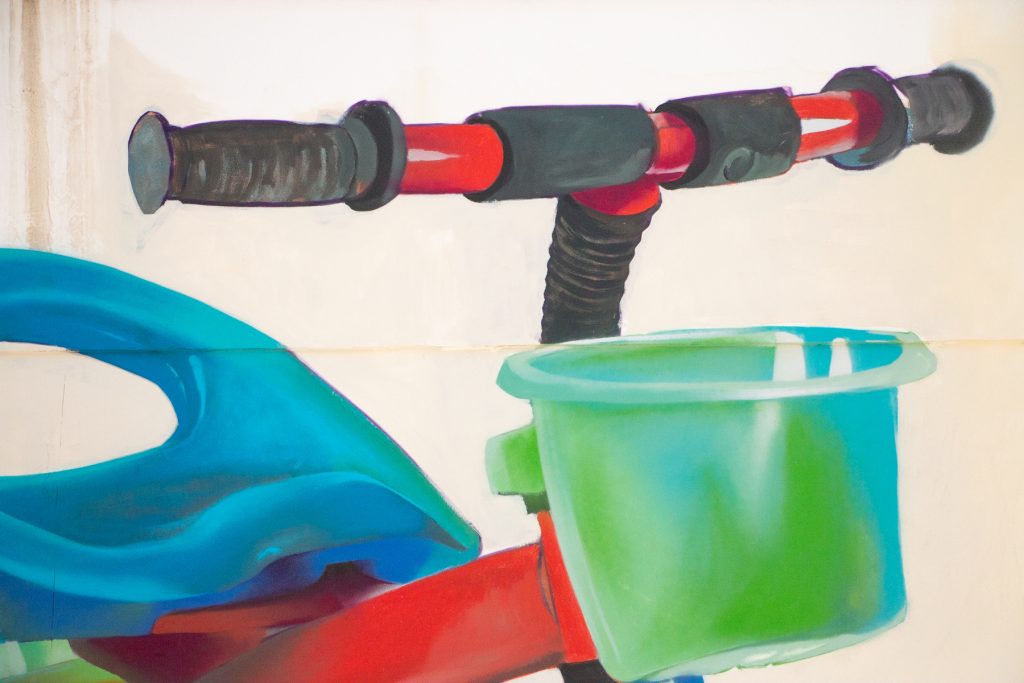
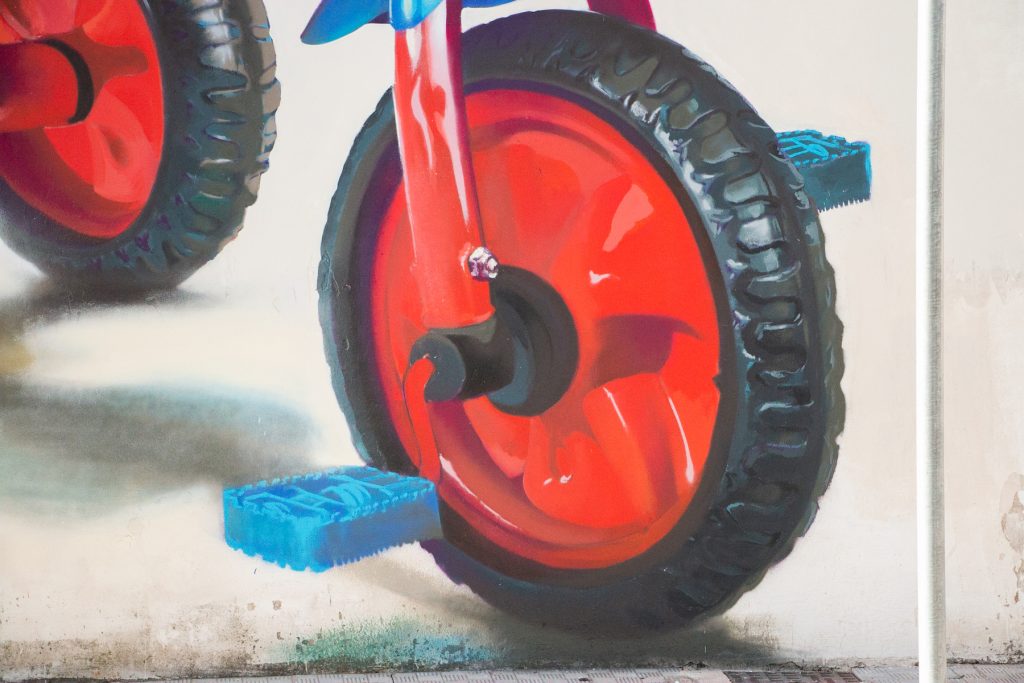
Case maclaim. Image copyright Vincenzo-Cascone
The tricycle, a symbol of childhood and playfulness, stands alone, a silent reminder of the emptiness; yet, even in its silence and solitude, the tricycle retains a sense of resilience and hope, a promise of the joy and vitality that could return.
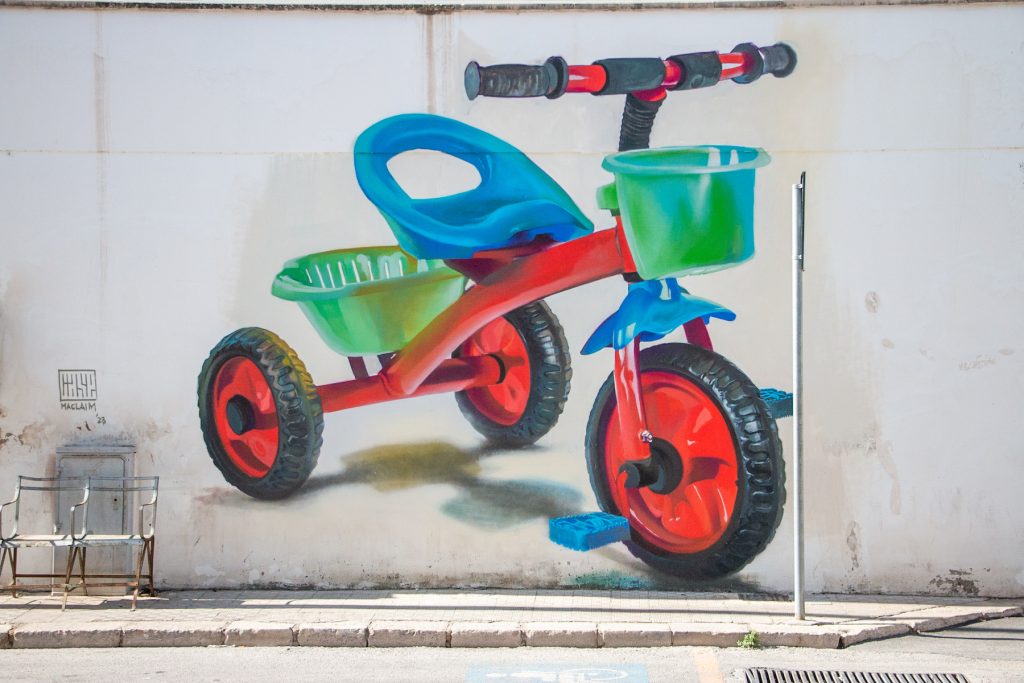
Case Maclaim. Image copyright Vincenzo-Cascone
“Il Tempo in Posa” is a tribute to Gesualdo Bufalino, Gioacchino Iacono Caruso and Comiso’s Heritage and People, and serves as a multifaceted reflection on the past, present, and future. The installation explores themes of identity, memory, and survival, inviting us to contemplate the richness and complexity of the human experience.
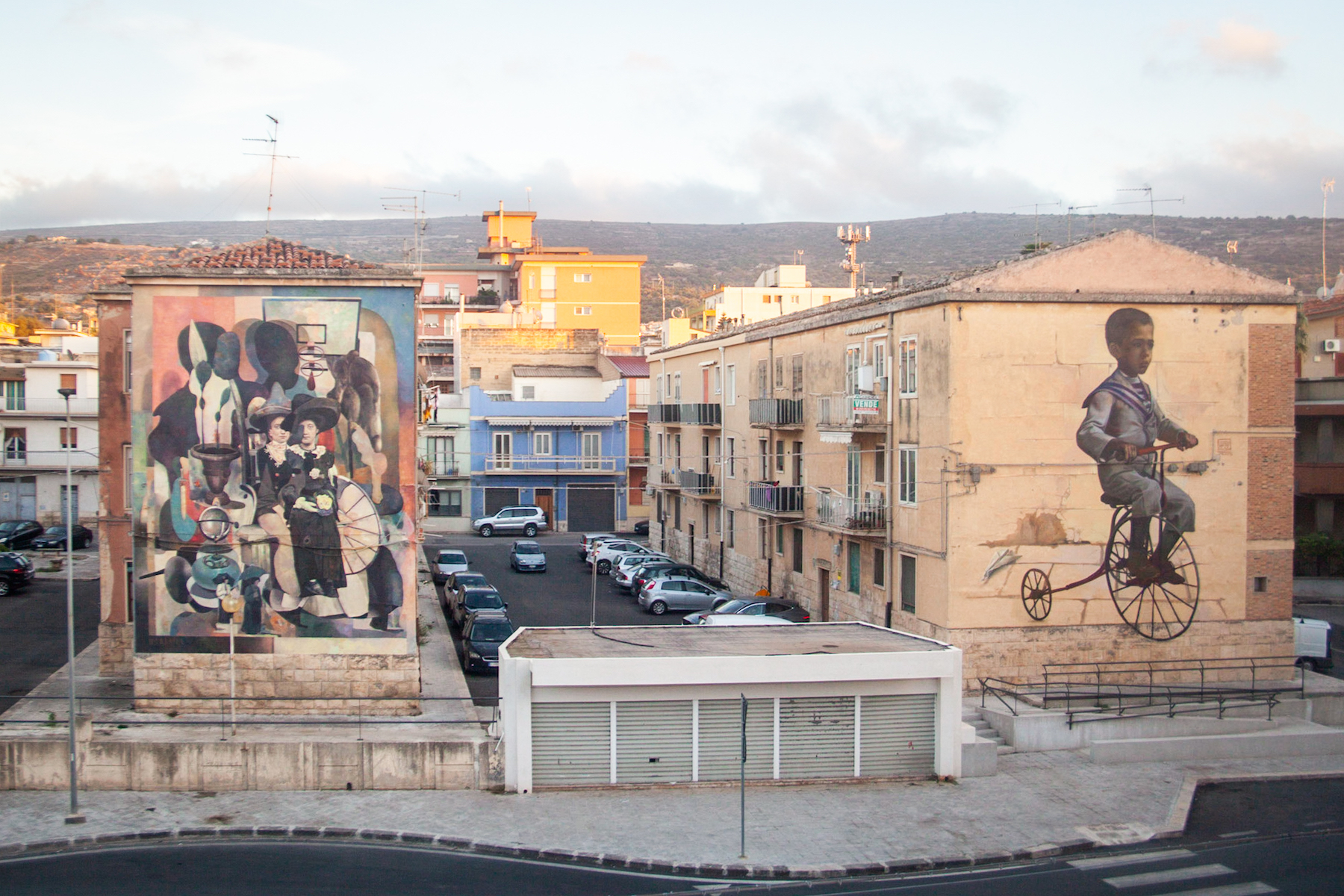
Marat Morik and Case Maclaim. Image copyright Vincenzo-Cascone
In the late 1990s, the municipality acquired the collodion plates, and today, they are preserved and displayed in the municipal building. The creation of the new artwork, “Il Tempo in Posa”, ensures that stories are not forgotten and that the legacy of those who came before us endures.
Created for Comiso Arte Pubblica (CAP), the pilot project of FestiWall, from November 4th to 14th, 2023, and curated by Vincenzo Cascone. Support of Avis di Comiso, the patronage of the municipal administration and the collaboration with the state institute of higher education Giosuè Carducci.
Image copyright Vincenzo Cascone